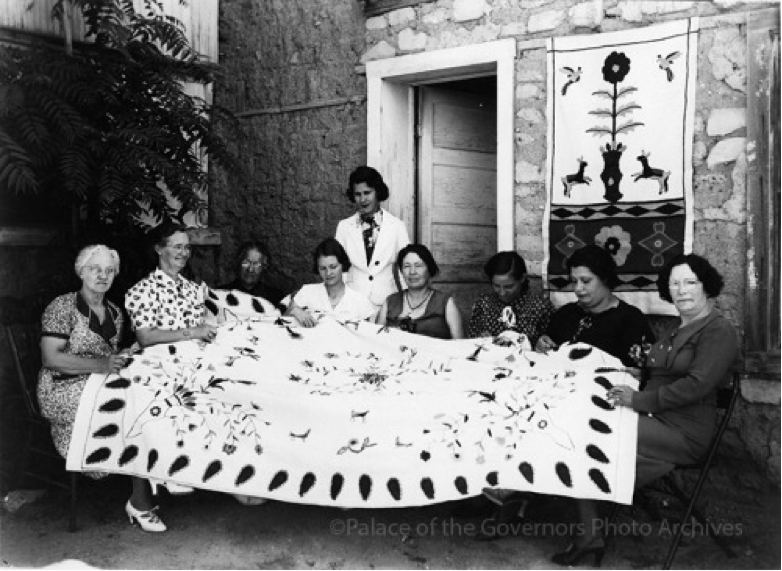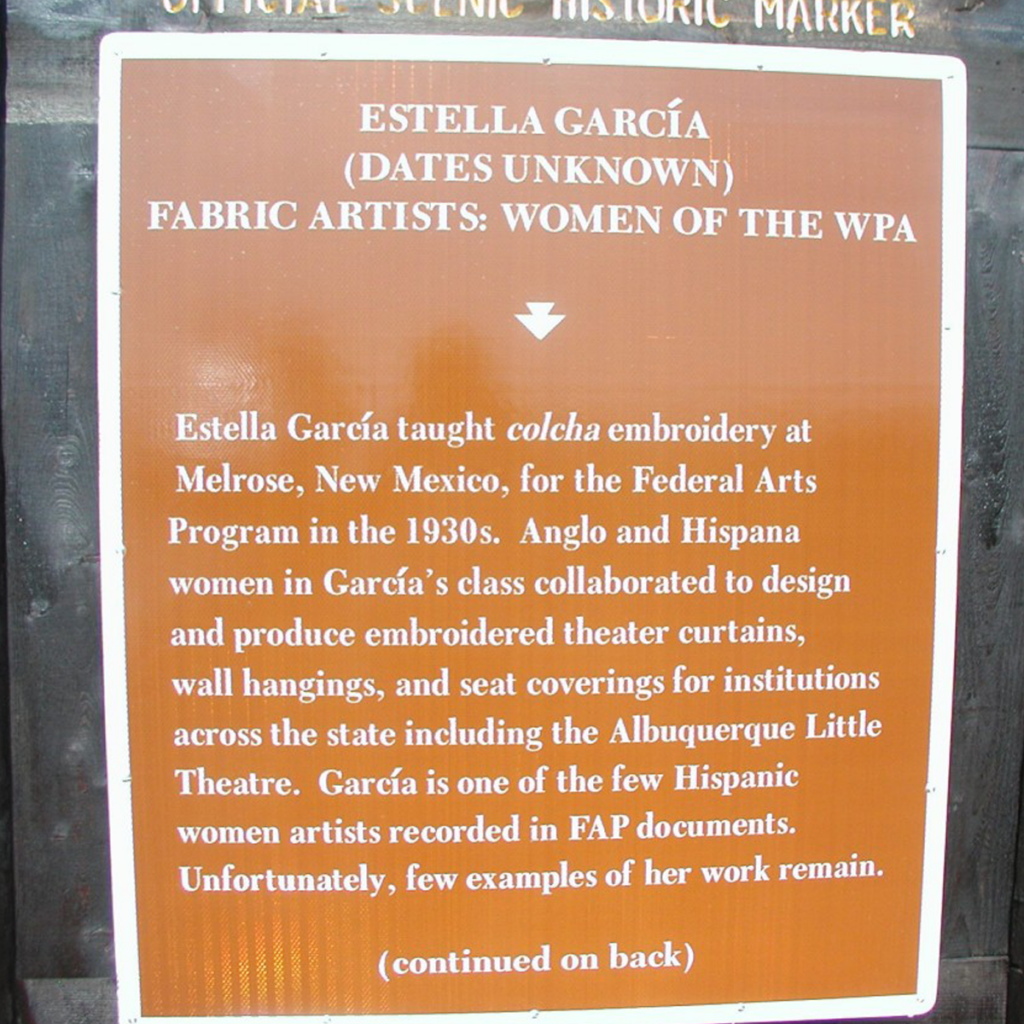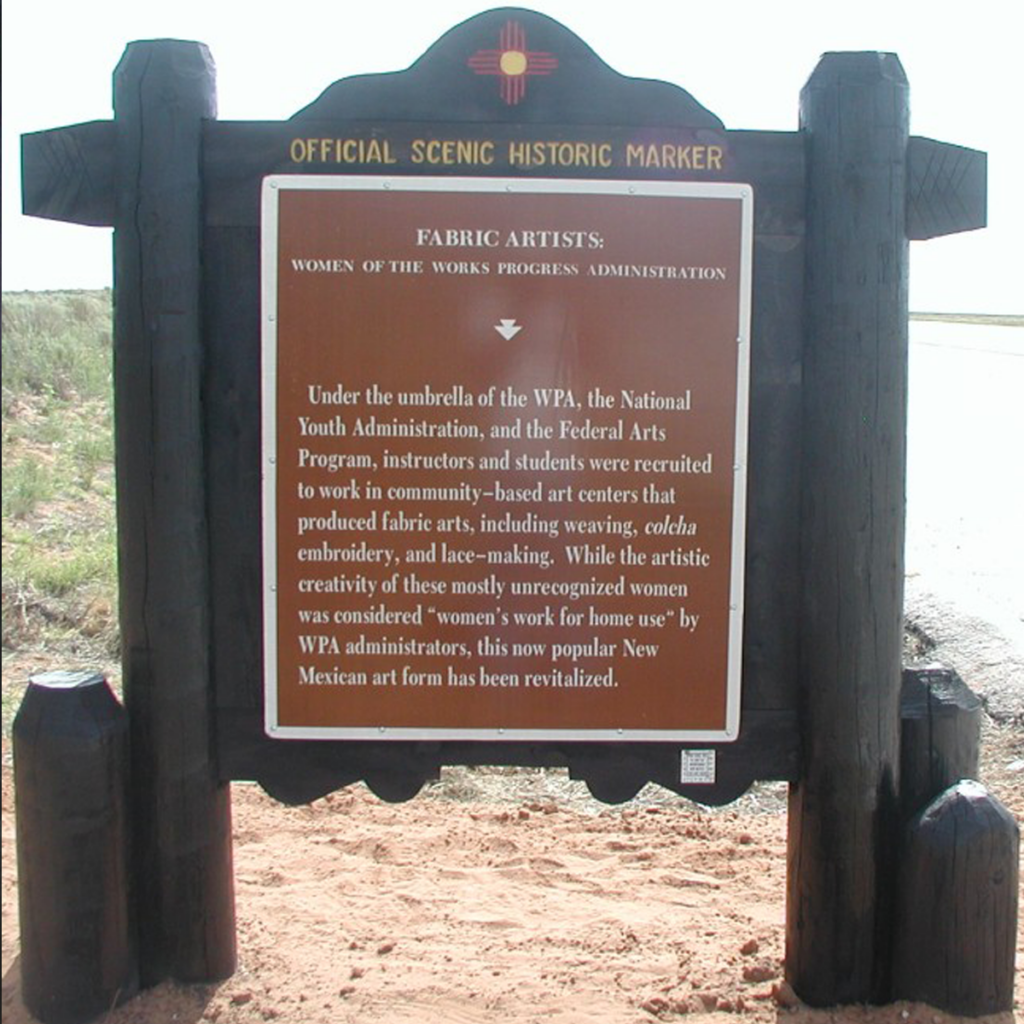Estella García (standing) and her colcha embroidery class.
Photo Credit: Courtesy of the Palace of the Governors Photo Archives (NMHM/DCA), Negative Number 090204
Estella García and Women of the WPA, Fabric Artists
As part of the Federal Art Program (FAP), she taught colcha embroidery at community-based art centers. Her students’ superior work was praised by State and Federal officials, featured in New Deal art exhibitions and installed at Melrose High School, Carrie Tingley Hospital, and the Albuquerque Playhouse.
Along with lace making, colcha embroidery came to New Mexico with the first Spanish settlements and was an occupation for gentlewomen. Women embroidered cloth for table covers and coverlets or bedspreads in the house or altar cloths in the church. Men were the traditional weavers of New Mexico’s jerga and Rio Grande blankets. In the twentieth century, as embroidery and lace making suffered a decline, weaving was still in demand and, until the Works Progress Administration (WPA) took on fabric arts, was still primarily performed by men.
In an effort to train women and help them create income, the WPA and Federal Art Program (FAP) developed the concept of community-based art centers. These centers were housed in small places that were usually donated by the host town. New Mexico had centers in Gallup, Roswell, Melrose, Las Vegas, Costilla, and Taos among others. Along with other art forms, artisans taught fabric arts to children and adults. WPA administrators considered fabric arts women’s work, opening the door for women to become weavers, which they continue to do in increasing numbers today.
Estella García taught in Melrose, a small town of 500 people between Ft. Sumner and Clovis, and at the time, the smallest town in the United States with an arts center. García was hired to teach colcha embroidery. Her group of Anglo and Hispana students quickly developed a reputation for creating superior work. State and national officials praised their art. Their colcha embroidery was featured in numerous New Deal art exhibitions, including Bloomingdale’s Department store in New York City. Along with the quality of their work, they were prolific. They became known for doing large theater curtains that were installed at Melrose High School, Carrie Tingley Hospital, and the Albuquerque Playhouse. They also created wall hangings and seat and pillow covers. Most of their work has been lost, and Rita Rodríquez Chávez is the only identified class member. García herself is one of a few Hispanic women mentioned in the FAP documents. The absence of identities of her students, as well as the paucity of identified examples of their work from New Deal records attests to the administrative perception that the work of women textile arts was considered a craft and not worthy of historical consideration as art. Nonetheless, the fact of their existence refuses to disappear and a new generation of scholars have begun the research to resurrect their names and art.
Sources:
William Roth. Hispanic Crafts of the Southwest: An Exhibition Catalogue. Colorado Springs: Taylor Museum of the Colorado Springs Arts Center, 1977.
Tey Marianna Nunn. Sin Nombre: Hispana and Hispano Artists of the New Deal Era. Albuquerque: UNM Press, 2001.
Interview with Andrew Cecil, Curator at the Roswell Museum of Art.
Directions:
Estella García and Women of the WPA, Fabric Artists
Curry County
Artist | Cultural preservationist | Educator |
Statehood (1912 - present) | Territorial Period (1848 - 1912) |
Southeast









